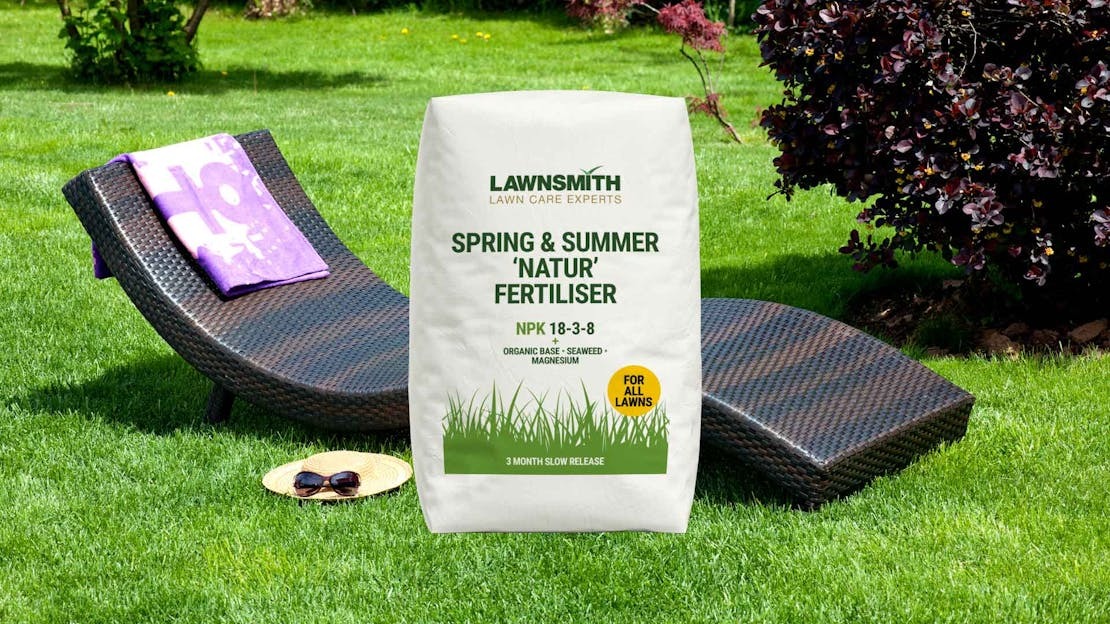
Best Lawn Food for Summer
In summer you can use a granular or liquid fertiliser. However, the conditions for application are very important during the warmer and drier summer months.
Any fertiliser is better than no fertiliser as this is the time when the lawn is mown, used and damaged the most, so nutrients are required to enable the grass to repair and recover from the activity. It also looks a whole lot better as well!
Good Soil Moisture is Needed
To utilise the fertiliser the grass plant must be healthy and not stressed by a shortage of water. This then enables the grass to take up granular feed through the roots via the soil or directly through the leaves if being applied as a liquid. In combination with the sun the grass will start growing and greening, both of which require more moisture so do ensure good moisture when feeding in the summer. If the soil is dry do not feed. If the grass is dry but the soil has moisture you can feed.
Do I need to Water In?
This shouldn’t be needed if using Lawnsmith Granular or Soluble feeds if there is adequate soil moisture. The problems starts when you use weed and feed or 4 in 1 products that are fine granular or powdery products. These need watering in as they can be quite aggressive and damage the lawn in sunny or slightly dry conditions. See When to Water my Lawn after Fertilising
Granular Food for Lawns on Clay Soils
Clay soils are slightly richer in nutrients than sandy soils and will also retain many nutrients longer. This means you don’t need such a strong feed or a feed that contains phosphate in the spring. This saves money!
Nitrogen (N) and potassium (K) are very important as are some nutrients that are more like vitamins such as magnesium (Mg) and seaweed which improve colour and health. See some options below.
Granular Food for Lawns on Loam, Sandy or Chalk Soils
These soils tend to hold air well but water and nutrients less well. Generally sandy soils will hold fewer nutrients over the long term so you need to put them in. This also means food for sandy soil is slightly stronger than those for clay soils.
As well as the nutrients we find in fertiliser for clay soils above you now also need phosphate (P). This component helps roots develop which is not held in sufficient quantities in sandy soils and is very important for getting the roots down into the water that drains deep in sandy, loam and chalk based soils. See some options below.
Soluble Food for all Lawns
Consider a granular feed in spring, summer and autumn as main meals as you or I would have breakfast, lunch and dinner. Soluble or liquid feeding is the snack you might have between meals. Therefore, the best use of a liquid feed is either as a top-up between feeds from late spring to early autumn or as summer feed applied every 4 to 6 weeks throughout the summer. Either of these methods offer a lot of flexibility because you can hold off from feeding if conditions become dry.